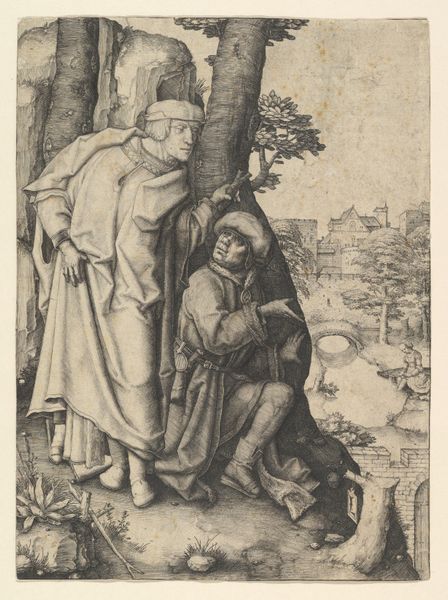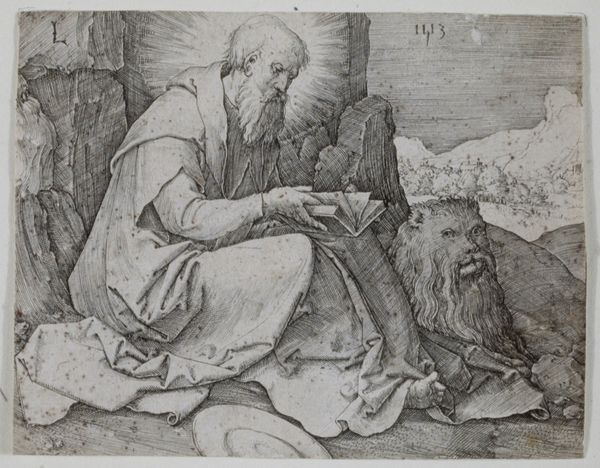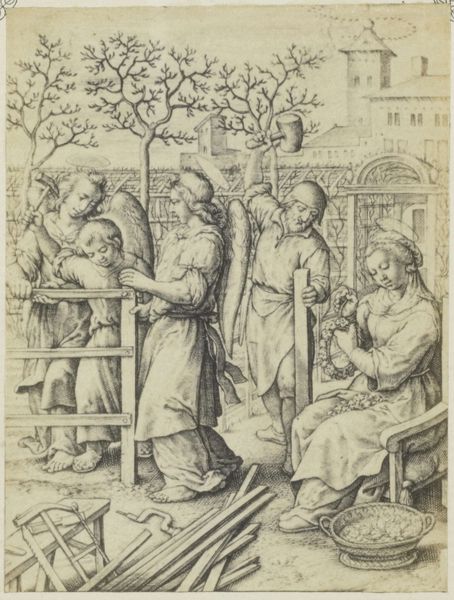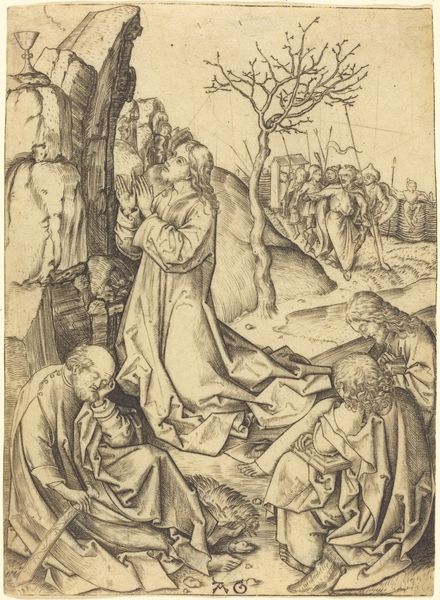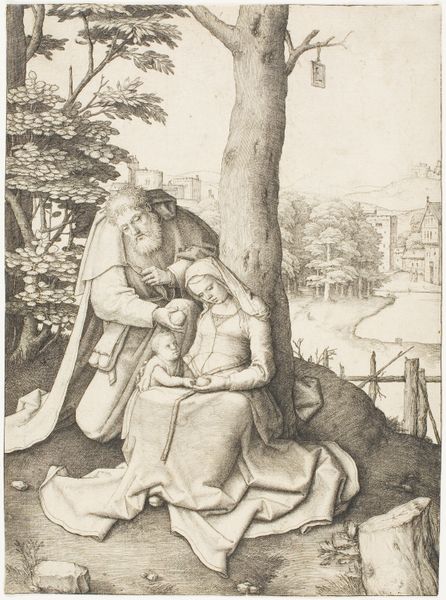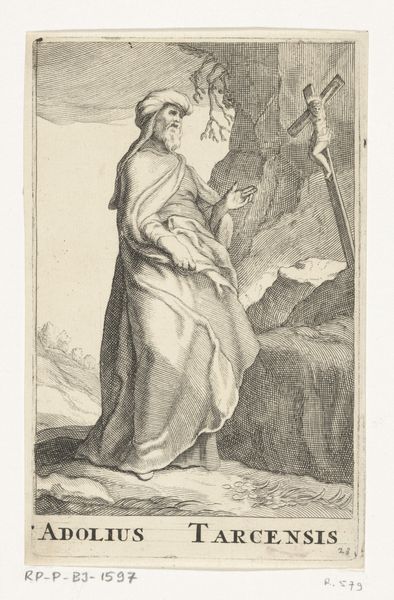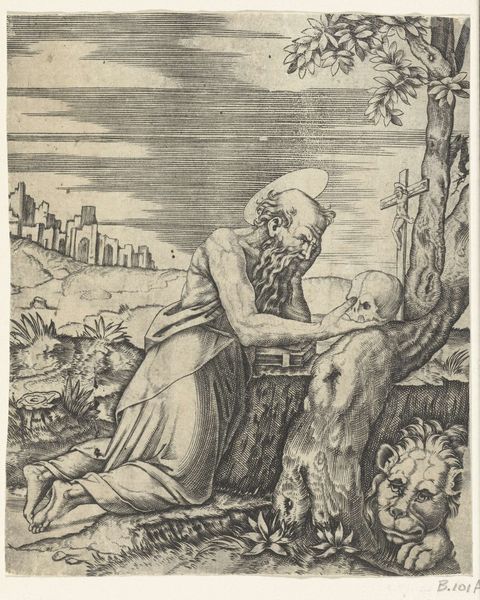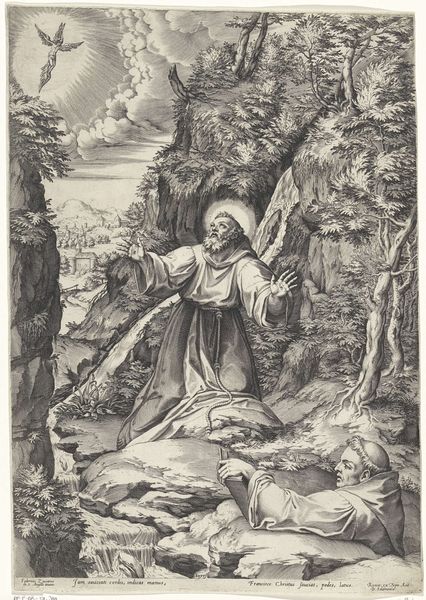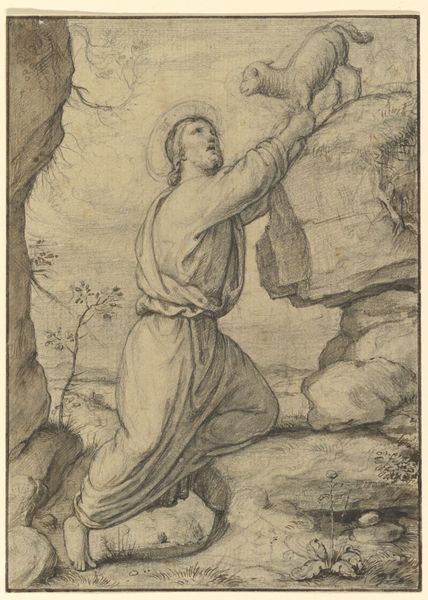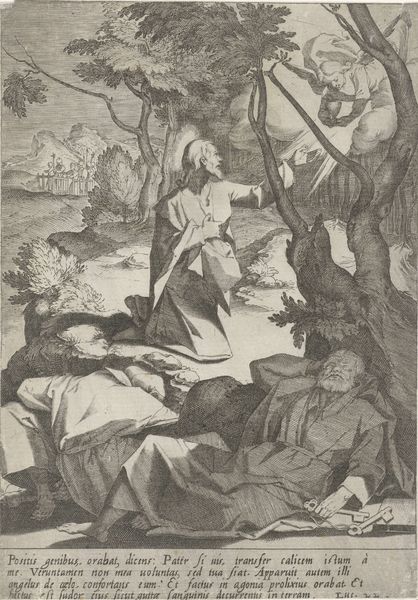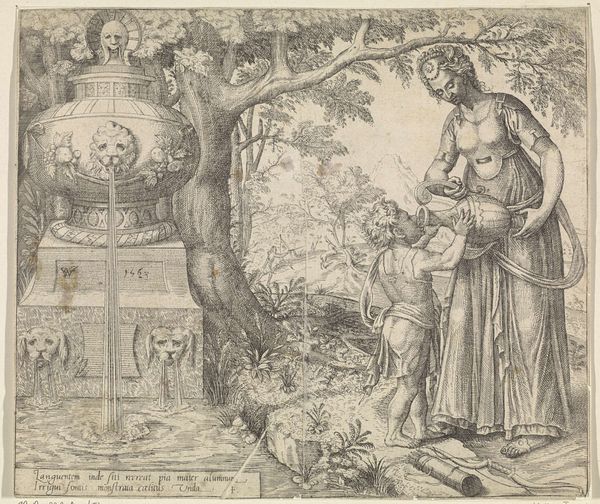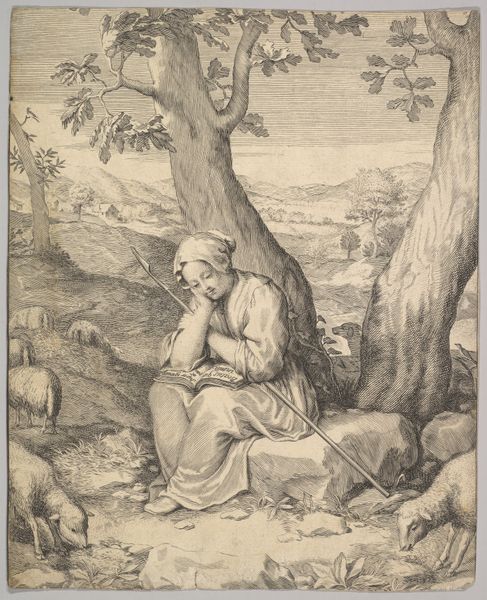
oil-paint
#
portrait
#
animal
#
oil-paint
#
landscape
#
figuration
#
11_renaissance
#
oil painting
#
history-painting
#
northern-renaissance
#
miniature
#
realism
Dimensions: 31.5 x 21.8 x 0.4 cm
Copyright: Public Domain
Curator: Here we have Gerard David's "Saint Jerome in the Wilderness," created around 1510. It resides here with us at the Städel Museum. What are your initial impressions? Editor: It strikes me as a remarkably serene image, considering the subject. The miniature scale and muted palette lends it an air of gentle contemplation rather than, say, tortured penance. Curator: Interesting point. I see this quietude too, but within it, the weight of cultural memory tied to Saint Jerome resonates deeply. The lion, of course, is a key element, an enduring symbol. Its calm presence, juxtaposed with Jerome's devotion before the crucifix, suggests a harmony between humanity, nature, and faith. Editor: A fascinating point about harmony. One might argue the composition works to reinforce established hierarchies: religious devotion above earthly loyalty. But in whose interest? Surely, paintings like this served not merely piety but a system that centered the church’s institutional authority. Curator: Authority is part of the history, of course, yet consider what the wilderness means symbolically. This wasn't just an escape, but a deep dive into a primal state, in order to renew through repentance. Even the landscape plays its part. The rugged cliffs echo Jerome's inner struggles, his need to break from earthly attachments. The tiny crucifix in the background further strengthens the central point. Editor: Absolutely, the strategic setting reinforces themes of penance and isolation, central tropes during a period of widespread societal uncertainty, and artistic experimentation during the Renaissance. What do we learn by looking closer at Jerome's expression? He looks not distraught but enraptured. This makes the painting less about pain, more about controlled emotional response, doesn't it? Curator: Precisely, It's a controlled but passionate devotion. And the choice of oil paints really enhances this feeling. It grants a depth of color and allows for realistic skin tones that create more palpable, resonant expressions of faith and introspection. Editor: A vital consideration, the medium. But its impact on its audience is really a testimony to its lasting effects. Art becomes, at this time, a method of communicating, creating a universal picture language. What can we understand about power and faith? Curator: In summary, by unpacking both symbolism and historical context, we come closer to recognizing not just surface serenity but those powerful, deeply encoded meanings resonating through this "Saint Jerome in the Wilderness." Editor: Exactly. That blending of personal anguish and structured faith positions this oil-paint narrative at the epicenter of enduring historical relevance, asking the audience what they consider most central, at the time.
Comments
No comments
Be the first to comment and join the conversation on the ultimate creative platform.
